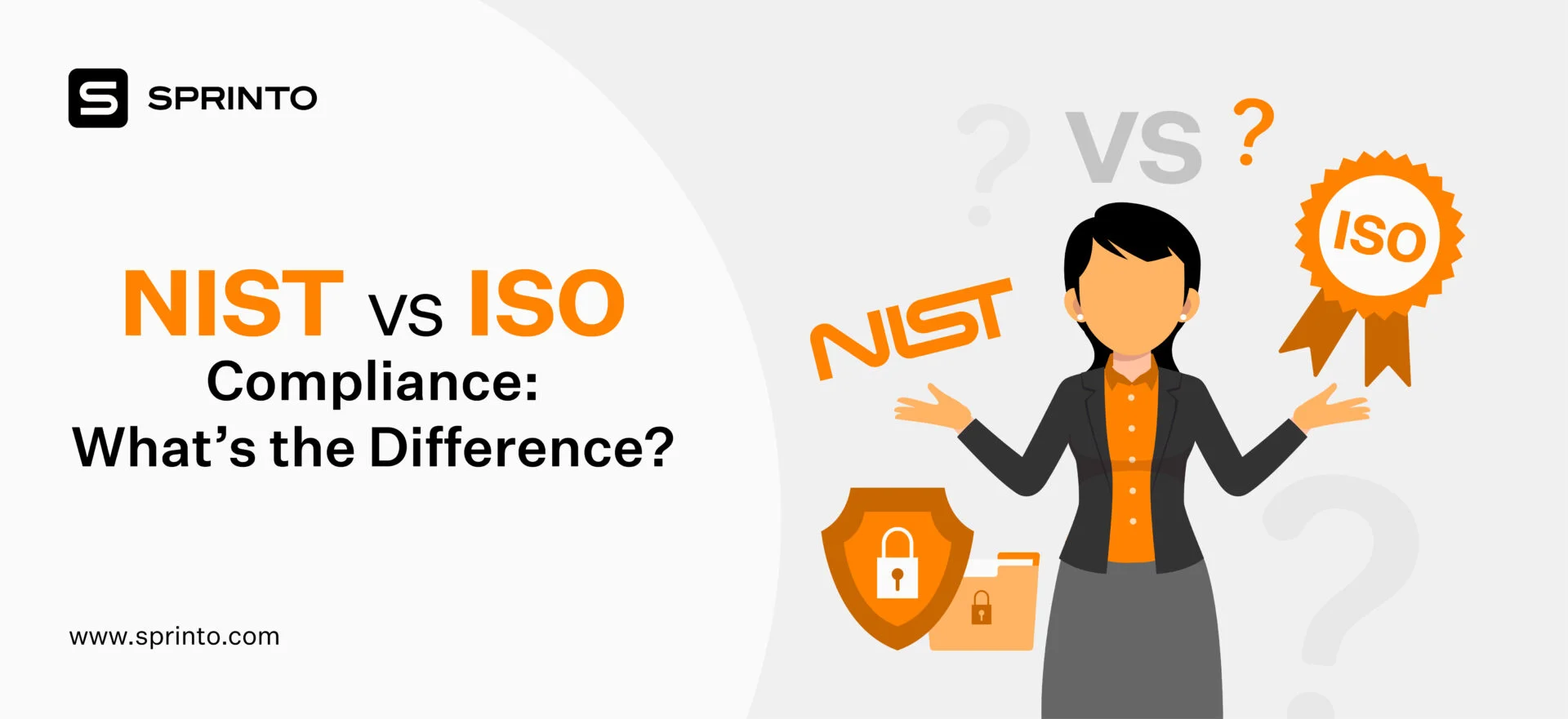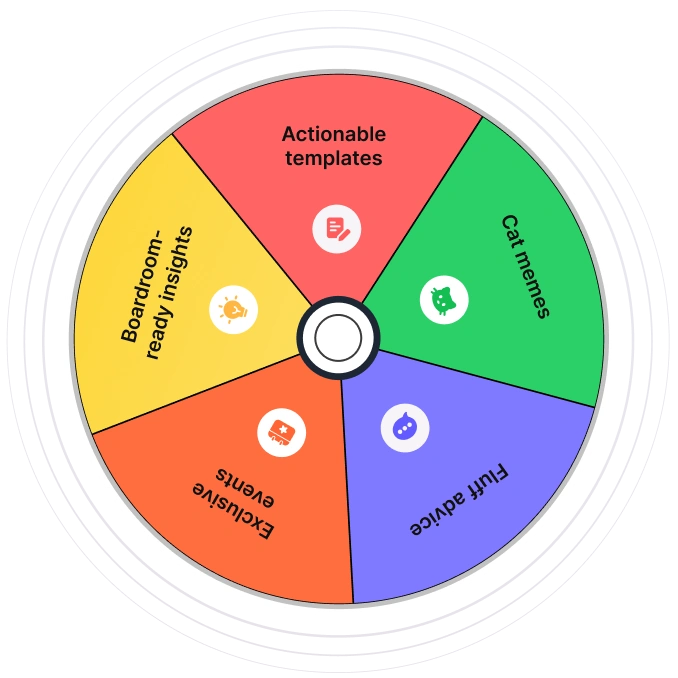NIST and ISO 27001 are two of the most sought after compliance certifications in the market today. While ISO/IEC 27001 takes a comprehensive approach to information security management, NIST sets the standards for information security, develops new technologies, and provides metrics to drive innovation and industrial competitiveness. So which among these standards suits you best?
There is, of course, no definitive answer to that question since it entirely depends on your approach to cybersecurity and information security management. However, there are aspects that can guide your decision. This blog provides an overview of the NIST and ISO/IEC 27001 frameworks and explores the similarities and differences between the two.
In this ISO 27001 vs NIST comparison, we talk about the unique differentiators and similarities between the two frameworks.
What is NIST CSF (Cybersecurity Framework)?
NIST CSF is a voluntary framework developed by the National Institute of Standards and Technology (NIST) that provides guidelines and best practices to help organizations manage their security posture and minimize cybersecurity risks.
The framework is flexible rather than prescriptive and takes a risk-based approach to support organizations of any size, sector or security maturity.
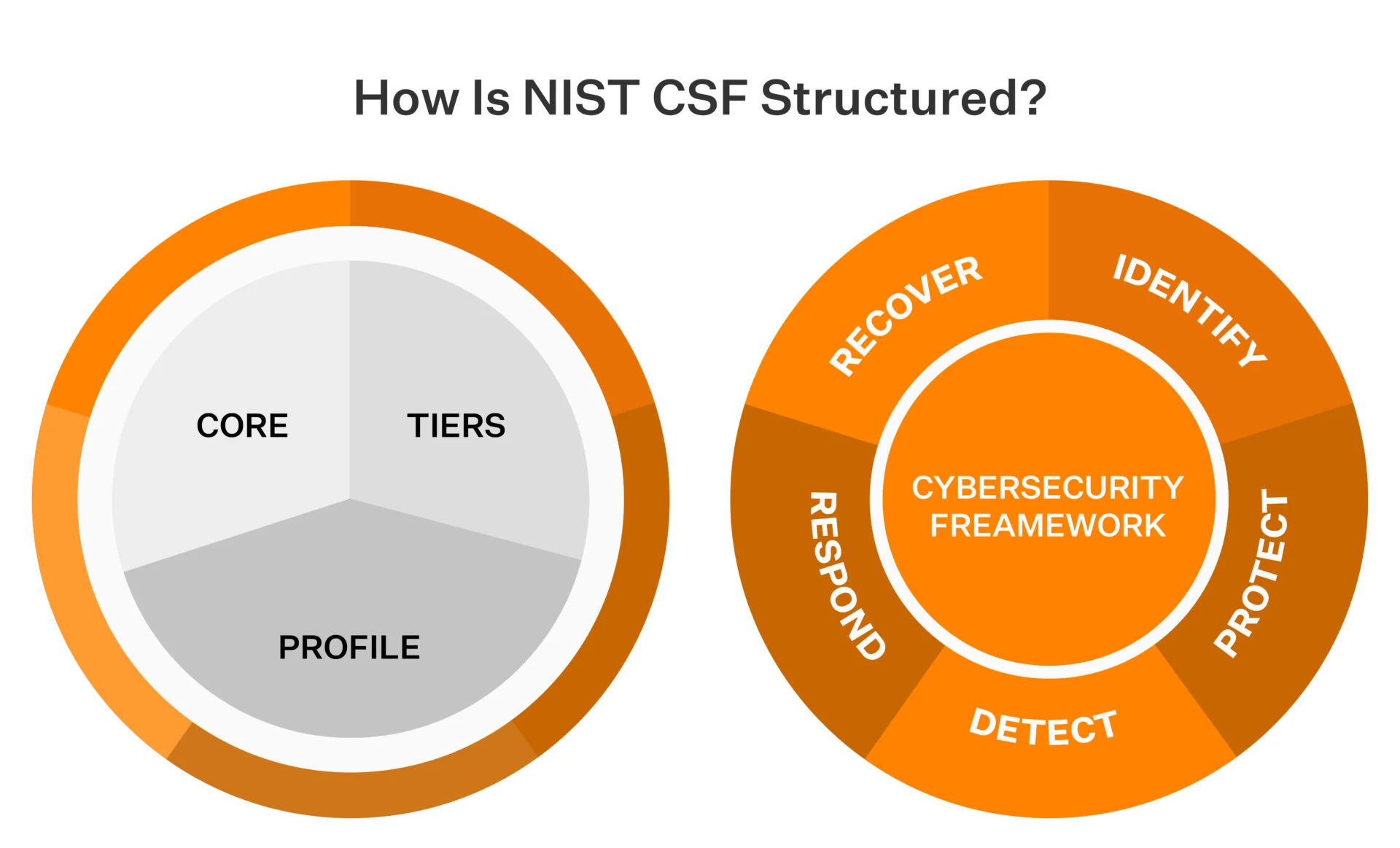
The NIST CSF has three main components – Core, Tiers, and Profiles. These components are mapped against the five main tenets of the security framework:
- Recover
- Identify
- Protect
- Detect
- Respond
These five core tenets cover everything from Risk identification to Threat response to Recovery.
Profile or ‘Target Profile’ helps you understand which 108 controls in NIST apply to your business. After identifying your target profile, you can map your current posture to your ideal/aspirational posture. This exercise also doubles up as a gap analysis activity to identify areas of improvement.
Download Your NIST 800 53 Controls List
Once you’ve conducted your gap analysis, the NIST Compliance helps you understand where you are in the cyber security ecosystem in terms of ‘Implementation’.
Breeze through compliance journey without the stress
Four Tiers To Implement NIST
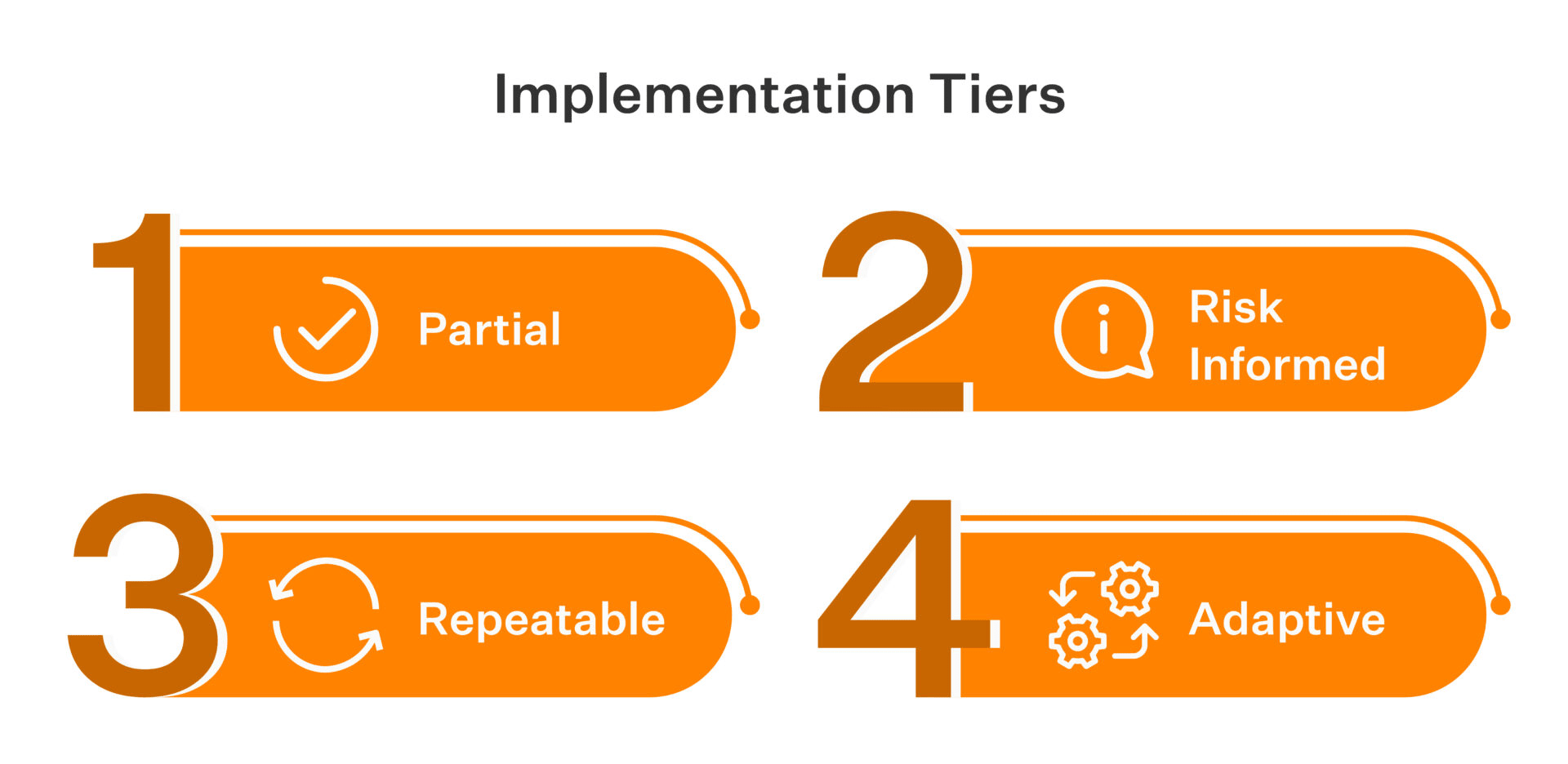
Tier 1: Partial
Have no formal processes in place for cybersecurity and incident response. In other words, you are waiting for something to happen, and you’ll deal with it when it happens.
Tier 2: Risk Informed
You are informed of the risks and are aware of what’s happening in the cybersecurity ecosystem. But, you have no processes in place within your organization to deal with it.
Tier 3: Repeatable
You have policies and procedures to detect and defend from a few types of attacks. Still, you do not have the tools to do it systematically.
Tier 4: Adaptive
This organization has tools and systems in place to deal with real-time attacks. For instance, a Tier 4 organization has processes to isolate that attack, reduce the threat surface, minimize damage, and recover quickly if an attack happens.
NIST Cybersecurity Framework vs NIST 800-53
NIST 800 53, also known as NIST 853, is designed for the federal information systems of the US. However, while it is designed for Federal Information Systems, it can be adopted by any organization dealing with sensitive or regulated data. In a nutshell, the NIST 800 53 is a collection of controls and security measures designed to help organizations protect themselves against different threats and deal with natural disasters or hostile attacks.
NIST 800 53 acts as a layer of cooperation and trust between organizations and government bodies.
NIST CSF casts a broader net of applicability. It is designed to help organizations improve their cybersecurity posture and better manage threats and breaches.
NIST 800-53 vs ISO 27001
The NIST 800-53 vs ISO 27001 comparison is also something that comes up when you start researching cybersecurity and compliance in the context of ISO 27001 vs NIST cybersecurity framework. In another article, we’ll have another detailed comparison of NIST 800-53 and ISO 27001, but for now, let’s consume the abridged version.
NIST 800-53 is designed primarily for US-based federal agencies and organizations that work with those agencies. ISO 27001 is for any organization looking to enhance its compliance posture and security readiness.
NIST focuses on the control of the flow of information from source to destination whereas ISO 27001 is more focused on enabling organizations to protect themselves from security threats and safeguard their data assets.
The Five Functions of NIST CSF
Let’s focus on the NIST CSF vs ISO 27001 comparison. But first, let’s take a closer look at the NIST CSF framework’s five functions (tenets).
1. Identity
Understand the assets in your business environments to effectively manage your cybersecurity resources(People, assets, data, systems). Identifying your business environment’s assets of value and the risks helps prioritize your efforts and approach towards cybersecurity.
In other words, to identify what you have in your organization.
2. Protect
This function talks about the necessary controls and policies required to ensure a continuous security posture without hindering the operation of critical infrastructure while defending your organization from security incidents or minimizing the impact of a breach.
In other words, how will you protect what you’ve identified in function #1?
3. Detect
The ‘Detect’ function talks about the processes and policies to actively identify the occurrences of security vulnerabilities to stay ahead and apply patches to your active vulnerabilities before they are acted upon by hackers.
In other words: continuously monitor existing vulnerabilities and identify new vulnerabilities that arise.
Go beyond Continuous Threat Identification & Remediation
4. Respond
This one is simple.
This function focuses on what an organization should do when a breach happens and the policies and controls it needs to implement to minimize the damage and reduce the incident’s surface area.
5. Recover
This function discusses the controls and infrastructural capabilities to help organizations defend against attacks and revive business continuity after an incident.
In other words, the steps necessary to bring your organization back to a hundred per cent productivity capacity after a breach.
NIST CSF vs ISO 27001 Similarities
In the NIST CSF vs ISO 27001 comparison, let’s take a moment to understand the similarities. This comparison’s end goal is to identify each framework’s characteristics and align them with your business goals.
NIST CSF and ISO 27001 are alike in more ways than one. For starters, both frameworks are voluntary in nature and have about 80% control overlap.
Here are the key similarities between NIST CSF and ISO 27001:
- Both NIST CSF and ISO 27001 emphasize the risk management approach to cybersecurity.
- Both frameworks encourage control selection and tailoring based on the organization’s context and risks.
- The focus of both NIST CSF and ISO 27001 is on continuous improvement where organizations review and iterate their processes based on emerging threats, new technologies and evolving requirements.
- The frameworks have overlapping controls and common security domains include access controls, incident response, risk assessment, asset management and business continuity and disaster recovery.
Both frameworks offer widely accepted best practices such as encryption and employee awareness training.
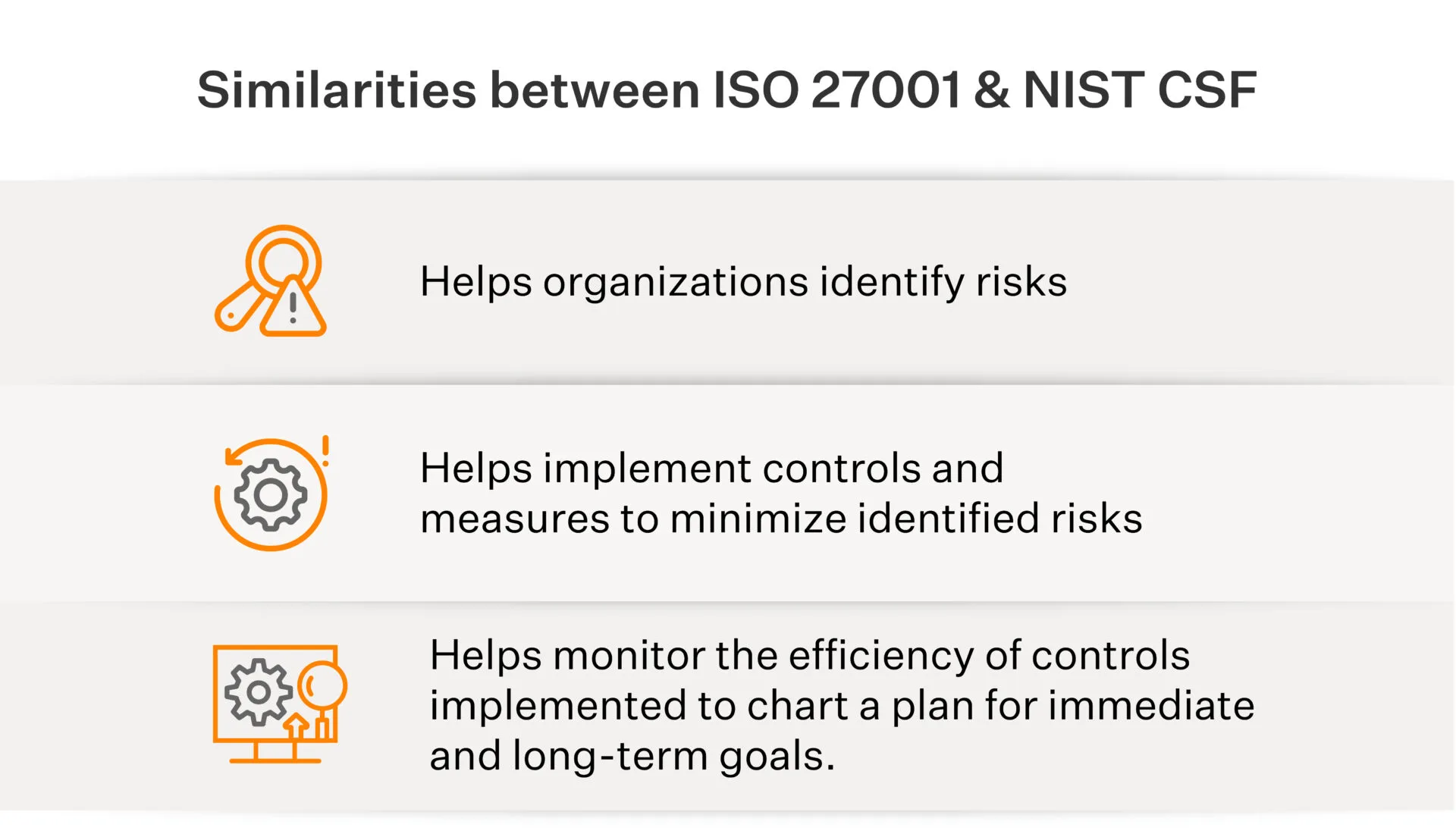
NIST CSF vs ISO 27001 Differences
Even with the 80% overlap, there are some significant differences between NIST CSF and ISO 27001:
| Basis | NIST CSF | ISO 27001 |
| Purpose | Improve cybersecurity risk posture | Establish an Information Security Management System (ISMS) |
| Certifiable | No | Yes, through third-party accredited auditors |
| Structure | 6 function: Govern (new), Identify, Protect, Detect, Respond, Recover | Clauses 4-10 and 93 Annex A controls |
| Suited for | Organizations that need to enhance cybersecurity maturity | Organizations that need a formal certification |
| Approach | Flexible and outcome focused | Formal set of requirements (prescriptive) |
| Implementation depth | High-level guidance, no strict documentation mandates | Requires detailed documentation and control implementation |
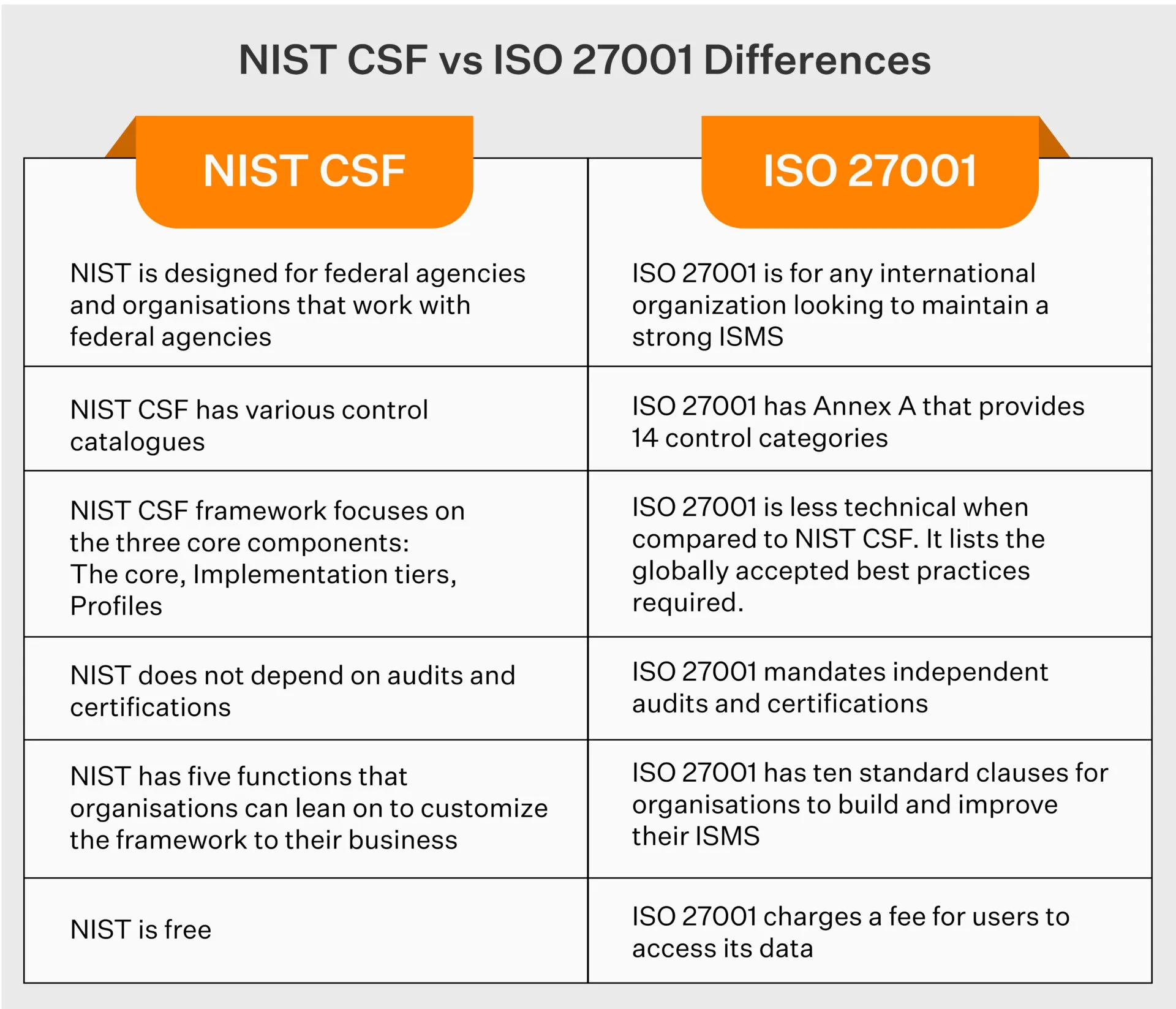
NIST vs ISO: Which One Is Right for My Business?
The NIST certification vs ISO 27001 comparison has no winner. For, both aim to improve an organization’s cybersecurity but through different paths.
Generally, ISO 27001 is sought after by organizations with a certain operational maturity level and ones that have reached a phase where their business prospects explicitly ask for an ISO 27001 certification to showcase their ISMS standards.
On the other hand, NIST CSF is one that even small organizations who want to begin their journey towards implementing security best practices can take up.
The significant overlap in controls and policies with ISO 27001 and other global frameworks makes it a catch, especially for organizations with tight infosec and compliance budgets.
As a business head analyzing this comparison, the real question you need to ask yourself is, ‘How will ISO 27001 or NIST CSF help my organization achieve its goal’? And of the two, which one has minimal dependencies, is most efficient and cost-effective?
Talk to our experts today to understand the compliance universe and learn the tricks and tips on how to pick a compliance framework without the confusion it usually comes with.
FAQ
1. What is the main difference between NIST and ISO 27001?
The main difference is that NIST provides a framework of guidelines and controls primarily for U.S. federal agencies, whereas ISO 27001 is a globally recognized standard that defines requirements for implementing and maintaining an Information Security Management System (ISMS).
2. Can an organization implement both NIST and ISO 27001?
Yes. Many organizations map NIST controls to ISO 27001 requirements to strengthen security maturity. While NIST helps establish a strong technical foundation, ISO 27001 formalizes those controls into a certifiable management system.
3. Which is easier to implement — NIST or ISO 27001?
While NIST CSF is generally easier to start with because it provides flexible, non-prescriptive guidance, ISO 27001 requires formal documentation, audits, and certification, making it more structured but also more resource-intensive.
4. Is NIST certification the same as ISO 27001 certification?
No. NIST is known as a framework, not a certification. Organizations can align their practices with it, but it’s not officially certifiable. ISO 27001, on the other hand, is a certifiable standard, and businesses can obtain an official certificate from an accredited auditor.
5. Do NIST and ISO 27001 overlap?
Yes. NIST and ISO 27001 share roughly 80% overlap in controls, focusing on risk management, access control, and incident response. Whereas NIST provides detailed control guidance, ISO 27001 focuses on management systems and continuous improvement for long-term compliance.
Vimal Mohan
Vimal is a Content Lead at Sprinto who masterfully simplifies the world of compliance for every day folks. When not decoding complex framework requirements and compliance speak, you can find him at the local MMA dojo, exploring trails on his cycle, or hiking. He blends regulatory wisdom with an adventurous spirit, navigating both worlds with effortless expertise
Explore more ISO 27001 articles
ISO 27001 Overview & Requirements
ISO 27001 vs Other Frameworks
ISO 27001 Audit & Certification Process
ISO 27001 Management & Assessment
ISO 27001 Implementation & Automation
ISO 27001 Industry-Specific Applications
research & insights curated to help you earn a seat at the table.



